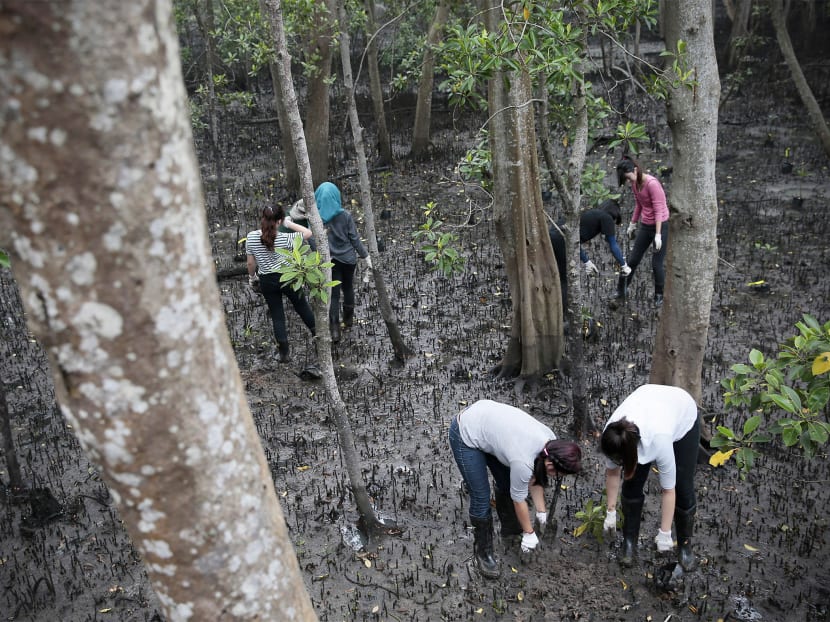Mangrove field opens at Sungei Buloh Wetland Reserve
SINGAPORE – A new mangrove arboretum that will be home to half the world’s 70 “true” mangrove species — those that grow only in the mangrove environment — has been launched at the Sungei Buloh Wetland Reserve by the National Parks Board (NParks), with a donation of S$500,000 from Kikkoman Singapore to mark its 30th anniversary.

The mangrove arboretum — or collection of trees — will have 2,000 mangrove trees from 35 native species planted progressively along a 500m stretch. Photo: Jason Quah
SINGAPORE – A new mangrove arboretum that will be home to half the world’s 70 “true” mangrove species — those that grow only in the mangrove environment — has been launched at the Sungei Buloh Wetland Reserve by the National Parks Board (NParks), with a donation of S$500,000 from Kikkoman Singapore to mark its 30th anniversary.
The arboretum — or collection of trees — will have 2,000 mangrove trees from 35 native species planted progressively along a 500m stretch at the Sungei Buloh Wetland Reserve Coastal Trail, which is currently open to the public as part of the reserve’s latest extension along Kranji Way. NParks will install signs with information on various mangrove species at the arboretum. Among the species to be featured include the globally critically-endangered Eye of the Crocodile trees, which got its name from breathing pores on its trunk that resemble crocodile eyes.
Mangroves provide habitats for animals and prevent coastal erosion. NParks’ director of conservation Wong Tuan Wah said at the launch today (Oct 5) the initiative came about after a study found that Sungei Buloh housed 30 out of 35 native mangrove species in Singapore. “So with this new initiative now, we want to increase the number of species in Sungei Buloh itself so that there’s one focal point for people who want to study mangroves,” he said, adding that the initiative would also replenish and increase the biodiversity of the mangrove habitat.
Coordinating Minister for Infrastructure and Minister for Transport Khaw Boon Wan helped to plant one of the first 200 trees, together with Mr Yuzaburo Mogi, honorary chief executive officer and chairman of the board of directors for Kikkoman Corporation. Kikkoman staff, student volunteers and other community partners will continue the planting process over the next two years, starting this month. Kikkoman Singapore will also sponsor a three-hour education programme for children between four and six years old starting in June next year.
Schools are one of the community partners regularly called on, among them River Valley High School student Micaiah Chua, 16. He and his schoolmates will be transplanting 30 mangrove saplings of six different species, which they collected from Changi Beach in April and were growing in school for the past few months as part of a conservation project.
“I (was not) very familiar with mangroves, (but) from my project and from coming here today, I’ve actually learnt much more; for example, identifying the species of mangroves (and) why conservation is so important,” said Micaiah.






